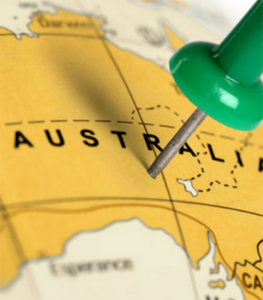Migration numbers a signpost to the future
The federal government has released data for immigration to Australia over the 2019-20 financial year which point to the role of migration in the nation’s recovery from the COVID-driven economic crisis.
The permanent migration intake was 140,366 with seventy per cent of the visas granted through the skilled stream (95,843 in total), including 4,109 places under the highly skilled Global Talent – Independent program, launched in November 2019.
 There were 23,372 regional visas delivered, from the 25,000 places allocated. This compares to 18,308 regional visas granted in 2018-19 – an increase of 27 per cent.
There were 23,372 regional visas delivered, from the 25,000 places allocated. This compares to 18,308 regional visas granted in 2018-19 – an increase of 27 per cent.
There were 41,961 visas granted in the Family program, including 37,118 Partner visas.
Two-thirds of permanent visas were granted to individuals already in Australia who transitioned from a temporary visa to permanent residency.
There were also 13,171 visas granted in the Humanitarian Program in 2019-20, including 4,765 visas (45 per cent) for those who were referred for settlement in regional areas.
The size and composition of the 2020-21 Migration and Humanitarian programs will be considered in light of the developing COVID-19 situation and announced as part of the Budget process in October.
Migrant and refugee settlement agency AMES Australia says it supports the federal government’s plan to reinstate Australia’s migrant and humanitarian settlement programs as soon as it is safe to do so.
AMES Australia CEO Cath Scarth said that a reinstated migration program could be a driver of recovery from the economic impacts of the COVID-19 pandemic.
“We know that migration has been a major driver of economic growth in Australia and will continue to be so if managed properly and safely,” Ms Scarth said.
“In fact, in the context of the COVID-driven economic crisis, migration has never been more important,” she said.
“A study by the Migration Council of Australia showing that if pre-COVOD immigration programs return after the crisis they could as add much as $1.6 trillion to Australia’s GDP by 2050,” Ms Scarth said.
“We know that over time migrants and refugees achieve higher workforce participation than the Australian average and they are much more likely to start businesses.
“And migrants who are citizens have an unemployment rate of just 3.3 per cent – higher than the national average and the figure for Australian-born jobseekers,” she said.
But Ms Scarth also called for economic recovery programs to include newly arrived migrants and refuges already in Australia.
“Since March because of the COVID-19 pandemic, employment has fallen by 660,700 and more than 900,000 people are now unemployed,” she said.
“The gap in unemployment rates between migrants and the Australian-born population has recently widened to almost two per cent. And now, there are proportionately twice as many migrants and refugees looking for work as Australian-born jobseekers,” Ms Scarth said.
“That is why the nation’s COVID-19 economic recovery plan must be inclusive of those who are new to our shores,” she said.












